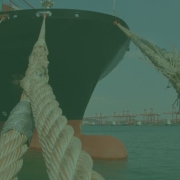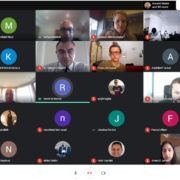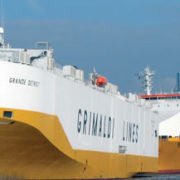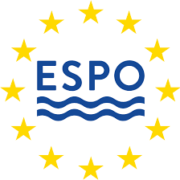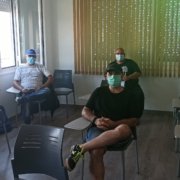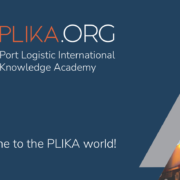Navigating the Future of Sustainable Ports: An Interview with Alexandre Ariza

Alexandre Ariza, Academic Manager of the Escola Europea – Intermodal Transport
This month, we bring you closer to expert perspectives on environmental transitions in the port and maritime logistics sectors. We had the opportunity to sit down with Alexandre Ariza, the Escola’s Academic Manager and lead on our environmental simulator for ports, to discuss the latest trends, challenges, and strategies for adapting to a greener future.
Q. What trends are you seeing in environmental transitions within the port and maritime logistics sectors?
A: In recent years, there has been a clear shift toward decarbonization in ports and the maritime sector, driven by international regulations and the objectives set by the European Commission’s 2030 Fit for 55 plan and the Green Deal 2050. These initiatives aim for a 55% reduction in greenhouse gas emissions by 2030 and climate neutrality by 2050. Key trends include the electrification of port operations, the adoption of alternative fuels such as hydrogen and liquefied natural gas (LNG), and the implementation of digital technologies to optimize energy efficiency.
Another critical aspect of decarbonization, aligned with the European Commission’s strategy, is intermodality. Reducing truck use by maximizing rail and sea highways is essential. Ports are key intermodal hubs, and improving the flow of goods through rail connections and short sea shipping to other ports is crucial. However, one of the major challenges is that there is no clear commitment to a single alternative fuel, and developing multiple options is extremely costly. While technologies like hydrogen are promising, they are still under development, meaning we must start the transition with options that, while not perfect, are more immediately implementable.
Q. What are some of the biggest challenges in making ports greener?
A: One of the biggest challenges is financing the energy transition. The upfront costs of adopting green technologies, such as electrification or alternative fuels, are high, and many port facilities rely on outdated equipment that is difficult to upgrade. Additionally, there is no clear consensus on which alternative fuel will be the standard in the long term. Technologies like hydrogen and ammonia are still in early stages and present technical and economic barriers. However, we cannot wait for perfect solutions; we must begin with currently available technologies.
Furthermore, improving intermodal transport systems is a major challenge. Ports need to optimize their rail and sea connections to minimize truck transport, aligning with the goals of the European Commission. Collaboration across the entire logistics chain and financial incentives will be crucial to achieving these goals without sacrificing operational efficiency.
Q. How can professionals in the industry adapt to these changes?
The transition to more sustainable port operations is a complex process, especially since day-to-day operations remain a priority. Nevertheless, this change is inevitable and represents a costly long-term investment in initiatives such as the circular economy and new fuel supply systems.
A key strategy is to provide continuous training to current professionals, focusing on new energy technologies and their operational implications. Training in the management of refuelling stations for alternative fuels and the logistical planning of green corridors is essential to ensure that professionals can adapt without losing operational efficiency.
Moreover, enhancing intermodal capabilities by improving rail and sea highway connections is crucial. Training professionals to manage these systems effectively and plan for their integration into port operations will be key to achieving more sustainable logistics and reducing the carbon footprint of transportation.
Q: Can you tell us about the realistic game simulations you’re working on under the Green Marine Med Project?
The simulator we are developing under the Green Marine Med Project, in collaboration with PortWise, aims to provide a comprehensive understanding of the various variables that influence the strategy for planning an energy transition in a port. Unlike a digital twin, which focuses on analyzing and controlling operational decisions or evaluating real-world scenarios, our simulator enables professionals to grasp how different factors interact and affect the energy transition holistically.
This helps to create more informed and strategic planning, allowing port professionals to identify best practices and anticipate challenges in the transition toward more sustainable operations.
Q: What skills will be important for professionals working in sustainable ports?
In a greener and more sustainable port, key competencies will include a solid understanding of new energy technologies, such as electric systems and alternative fuel management, as well as data analysis skills to optimize operations. Digital competencies, particularly in the use of energy management and monitoring systems, will also be essential.
In addition, the ability to manage energy transition projects and collaborate across sectors with regulators, energy suppliers, and customers will be critical to ensuring a smooth transition to more sustainable operations. Improving intermodal transport systems, such as rail and sea highways, will also require professionals to develop logistics planning skills that align with the EU’s Fit for 55 and Green Deal 2050 objectives.

